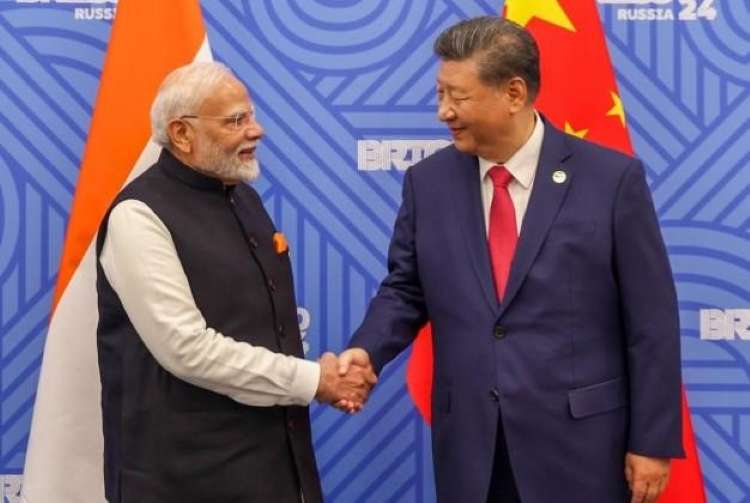
Thaw in India-China ties: One of the most surprising outcomes of US President Donald Trump’s economic policies is the warming of India-China economic relations. As both nations look to expand bilateral trade to counteract growing US protectionism, subtle but significant shifts are underway. At a recent business forum in Beijing, Chinese Premier Li Qiang called on countries to open their markets to combat rising instability and uncertainty, as global trade grapples with US threats. While China has not explicitly mentioned India, New Delhi has signalled its intent to reduce non-tariff barriers and relax norms for Chinese foreign direct investment, easing tensions between the two neighbouring giants.
Just days before the US tariff deadline of April 2 is set to take effect, countries around the world are scrambling to understand the emerging global trade dynamics. The key question now is how far nations should go in accommodating Trump’s demands, and whether building new partnerships might offer a more sustainable path. One thing is clear — this year is likely to witness a pivotal moment in global trade dynamics.
READ I India looks to dodge Trump’s trade hammer
India-China ties: From estrangement to engagement
Over the past few years, anti-China sentiment in India has grown, particularly after the 2020 border clashes, and a deepening trade imbalance. India introduced a slew of measures aimed at curbing imports from China. These included higher tariffs, quality control orders, stricter inspections, and anti-dumping duties on select goods. India also mandated ‘country of origin’ labelling to promote local products and banned several Chinese apps—though the long-term impact of such bans remains debated.
To reduce dependency, sector-specific initiatives like the production linked incentive (PLI) scheme were launched to bolster domestic manufacturing in areas such as pharmaceuticals, electronics, and solar energy.
Despite these aggressive measures, the impact on China’s economy has been minimal. With total exports valued at around $3.59 trillion in 2023, India’s $121 billion worth of imports account for just 3% of China’s total exports. Even a 10% drop in India’s imports would reduce China’s exports by only 0.33%—a negligible figure. China’s vast and diverse global trade network allows it to redirect goods to other markets with relative ease. Meanwhile, India’s PLI schemes are likely to yield long-term, not immediate, benefits.
While Beijing publicly maintains its readiness to face US challenges, its actions suggest rising concern. Premier Li’s comments at the Beijing forum reflect China’s urgency in encouraging foreign investment and boosting domestic consumption as countermeasures to new US tariffs. The Trump administration is expected to conclude its review of trade restrictions by April 1.
A gamechanger in India-China ties
India should diversify its trade relationships beyond the United States, including with China, to hedge against Washington’s unpredictable policies. While strong ties with the US remain desirable, India increasingly sees value in engaging China in dialogue on normalising trade ties. The Economic Survey 2023–24 also recommended encouraging Chinese investments, particularly in sectors where local value addition is low, rather than importing finished goods.
This shift comes at a time when the Trump administration is pressuring India to lower tariffs and accept US-driven trade terms. A December 2024 NITI Aayog report titled Trade Watch noted that India has had “limited success so far” in capitalising on the ‘China Plus One’ strategy aimed at attracting global manufacturers seeking alternatives to China.
India is now considering a range of pragmatic economic steps, including easing visa restrictions for Chinese personnel and lifting some non-tariff barriers on imports. The government may also reconsider the ban on certain Chinese apps. For instance, Shein has re-entered the Indian market via a partnership with Reliance Retail, launching a new app called Shein India Fast Fashion. India may soon resume flights and visa issuance for Chinese scholars as part of this warming trend.
While the political consensus on re-engagement is still evolving, it appears that trade-focused India-China ties is a matter of when, not if. Ultimately, India will need to reduce tariffs and non-tariff barriers—particularly for inputs and products not manufactured at scale domestically. The Indian government is not inclined to actively incentivise Chinese trade but is moving toward removing some of the disincentives.
India stands to gain
China, too, is keen to restore India-China ties and has proposed renewed investment flows from Chinese companies. Relaxations may be announced in the coming weeks.
A working paper by the Economic Advisory Council to the Prime Minister (EAC-PM) noted that Indian exporters face numerous non-tariff barriers in China, limiting access to key markets—especially for agricultural and pharmaceutical goods. By easing restrictions, India could gain leverage to negotiate greater access for its products in China.
Moreover, the Indian government has acknowledged that decoupling from China is not an easy task—neither for India nor the rest of the world. India now faces a strategic choice: accept Chinese investments, or remain dependent on Chinese imports.
External Affairs Minister S Jaishankar, speaking in London in early March, remarked that Trump’s America First policy suits India as it contributes to a multipolar world. Meanwhile, India is sending a quiet but clear signal—it is willing to do business with China again and will not rely solely on the US to meet its economic ambitions.
